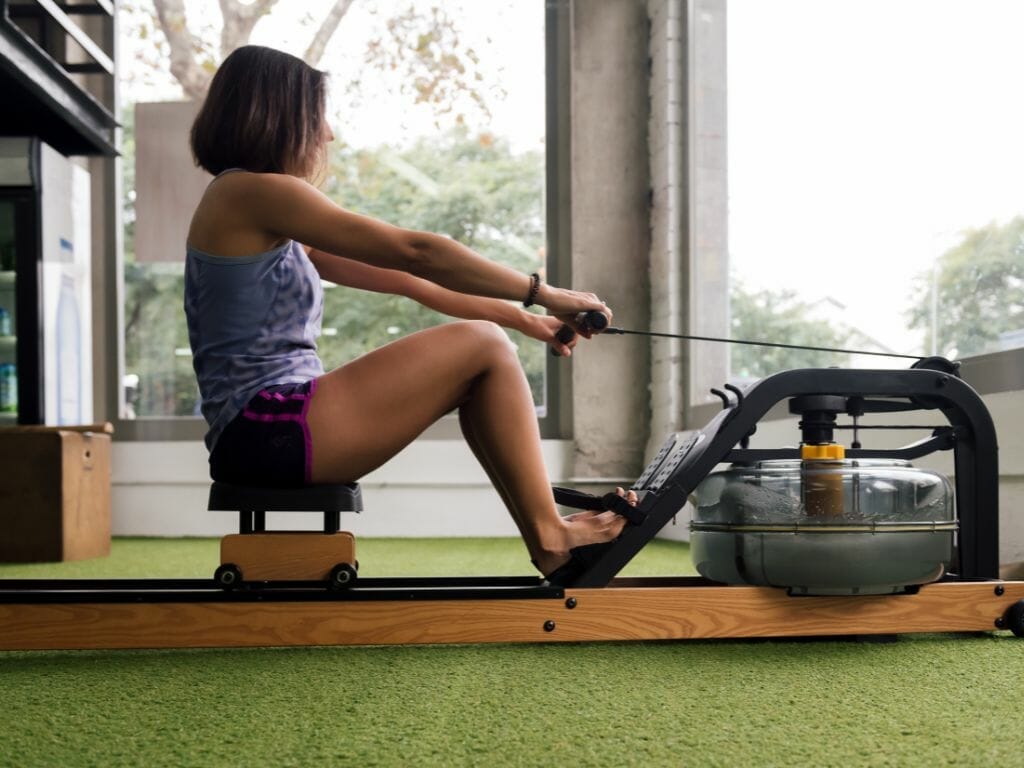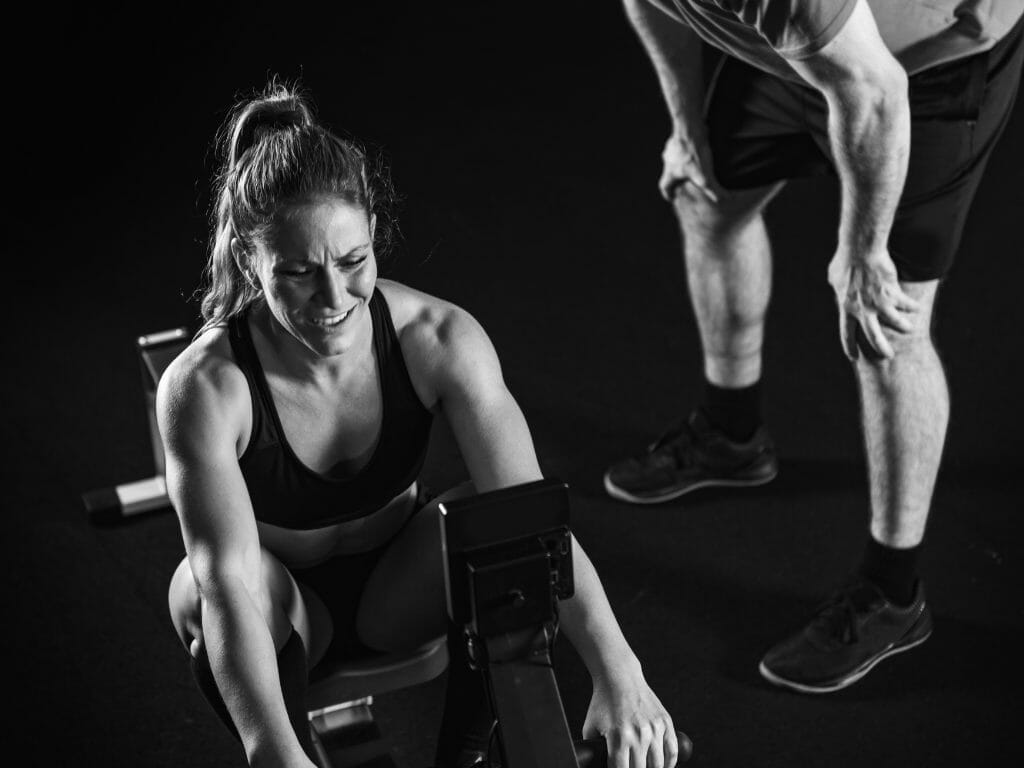Did you know that up to 80% of rowing injuries are caused by common mistakes made during at home workouts? Avoiding these mistakes is crucial for achieving optimal results and preventing injuries.
In this article, we will guide you through the most common rowing mistakes to avoid at home. By understanding and rectifying these errors, you can improve your technique, enhance your performance, and feel a sense of belonging to the rowing community.
Let’s dive in and start rowing the right way!
Key Takeaways
- Improper technique and posture can strain the lower back and result in loss of power and efficiency. Sit upright with a straight back, and relaxed shoulders, and engage core muscles properly.
- Warm up before rowing to reduce the risk of muscle strain. Include dynamic stretching, light cardio, and joint mobilization to prepare the body for physical activity.
- Incorporate strength training exercises like squats, deadlifts, bent-over rows, and planks to improve rowing performance, build necessary muscles, and prevent imbalances and injuries.
- Pay attention to nutrition and hydration. Proper hydration, balanced meals with carbohydrates, protein, and healthy fats, and timing meals correctly are essential for optimal performance and muscle recovery.
Improper Technique
You’re not using the correct technique, which can lead to injury and ineffective rowing.
One of the most common mistakes people make when rowing at home is not maintaining proper form. It’s important to understand that rowing is a full-body exercise that requires coordination and balance.
Many people tend to lean too far back or hunch their shoulders, which can strain the lower back and cause discomfort. Another common error is not engaging the core muscles properly. This can result in a loss of power and efficiency during the rowing stroke.
To avoid these mistakes, make sure to sit upright, with your back straight and shoulders relaxed. Engage your core muscles by pulling your belly button towards your spine.
Incorrect Posture
Improper posture can negatively affect your rowing performance and potentially lead to discomfort or injury. When your posture is incorrect, it can throw off the alignment of your body, causing strain on your muscles and joints.
To correct your form, start by sitting tall on the rowing machine, with a straight back and relaxed shoulders. Engage your core muscles to support your spine and maintain stability throughout the stroke. Strengthening your core will not only improve your posture but also enhance your rowing technique and power output.
Incorporate exercises like planks, Russian twists, and bicycle crunches into your training routine to target your abdominal and back muscles. By correcting your form and strengthening your core, you will optimize your rowing performance and reduce the risk of discomfort or injury.
Lack of Warm-up
Starting your rowing session without a proper warm-up can increase the risk of muscle strain and decrease your overall performance. It is crucial to prepare your body before engaging in any physical activity. By incorporating warming up exercises into your routine, you can effectively prevent injuries and enhance your rowing experience.
Here are some warming up exercises that you can try:
Overtraining

When it comes to overtraining in rowing, it’s essential to understand the importance of proper rest periods and injury prevention techniques.
Rest periods are crucial for your body to recover and adapt to the physical demands of rowing. By allowing yourself sufficient rest, you can reduce the risk of overuse injuries and optimize your performance on the water.
Incorporating injury prevention techniques such as stretching, foam rolling, and strength training can help you maintain a healthy and injury-free rowing season.
Proper Rest Periods
Make sure you take regular rest periods to avoid overexertion and promote proper muscle recovery. Rest and recovery are essential components of any training program, including rowing. Here are some key points to keep in mind for optimal rest and recovery:
Injury Prevention Techniques
Now that you understand the importance of proper rest periods let’s focus on injury prevention techniques to keep you safe during your rowing workouts at home.
Effective stretching is crucial before and after your session. It helps improve flexibility, increases blood flow to the muscles, and reduces the risk of injury. Make sure to stretch all major muscle groups, such as your legs, arms, back, and shoulders.
Incorporating injury prevention exercises into your routine can help strengthen the muscles and joints used in rowing, reducing the likelihood of strains or sprains. These exercises can include core stability exercises, shoulder and hip strengthening exercises, and balance exercises.
Neglecting Strength Training

Don’t forget to prioritize strength training if you want to avoid common rowing mistakes at home. Strength training benefits your rowing performance by improving your power, endurance, and overall body strength.
Incorporating strength training exercises into your routine will help you build the necessary muscles for a strong rowing stroke and prevent imbalances that can lead to injuries.
Here are four key exercises to include in your strength training regimen:
By incorporating these exercises into your training routine, you’ll improve your rowing performance and reduce the risk of common mistakes and injuries.
Keep up the great work!
Inadequate Recovery
Prioritize adequate recovery between your rowing sessions to enhance your performance and prevent injuries. Recovery strategies and the importance of rest cannot be emphasized enough in the world of rowing.
After a tough workout, your body needs time to repair and rebuild. Rest days allow your muscles to recover, reducing the risk of overuse injuries and fatigue. Incorporating recovery strategies like foam rolling, stretching, and massage can also help alleviate muscle soreness and improve flexibility.
It is essential to listen to your body and give it the rest it needs. Pushing yourself too hard without proper recovery can lead to burnout and decreased performance. So, make sure to schedule rest days and incorporate recovery strategies into your routine to optimize your rowing performance and stay injury-free.
Ignoring Nutrition
Ignoring nutrition can have a negative impact on your rowing performance and overall health. When it comes to rowing, your body needs the right fuel to perform at its best. Here are some dietary considerations and meal-planning tips to help you excel in your rowing journey:
Frequently Asked Questions

Can Rowing at Home Without Proper Technique Lead to Injuries?
Rowing at home without proper technique can indeed lead to injuries. It’s crucial to prioritize rowing technique and form to avoid strain on your body. Proper form not only prevents injuries but also maximizes the benefits of rowing.
How Long Should a Warm-Up Session Be Before Rowing at Home?
Before rowing at home, it is crucial to ensure a proper warm-up session. The duration of your warm-up should be sufficient to prepare your body for the workout ahead. Incorporating dynamic stretches can bring numerous benefits.
Is It Necessary to Incorporate Strength Training Exercises Into a Rowing Routine at Home?
Incorporating strength training exercises into your rowing routine at home is necessary. It not only provides benefits like increased muscle strength but also emphasizes the importance of maintaining proper form for optimal performance and injury prevention.
What Are Some Common Signs of Overtraining in Rowing?
Feeling fatigued, lack of motivation, and decreased performance are common signs of overtraining in rowing. To prevent this, listen to your body, prioritize rest and recovery, and vary your training intensity.
Can Neglecting Nutrition Affect Performance and Progress in Rowing at Home?
Neglecting nutrition can greatly affect your performance and progress in rowing at home. Proper technique is important, but fueling your body with the right nutrients is crucial for optimal results.
Conclusion
Now that you’re aware of the common rowing mistakes to avoid at home, you can steer clear of these pitfalls and achieve optimal results.
Remember, proper technique is essential for a successful rowing workout. So, focus on maintaining correct posture and warming up adequately before each session.
Don’t forget the importance of strength training and allowing yourself enough time to recover.
And of course, keep in mind that nutrition plays a vital role in supporting your rowing performance.
By avoiding these mistakes, you’ll be smoothly gliding towards your fitness goals like a well-oiled rowing machine.

